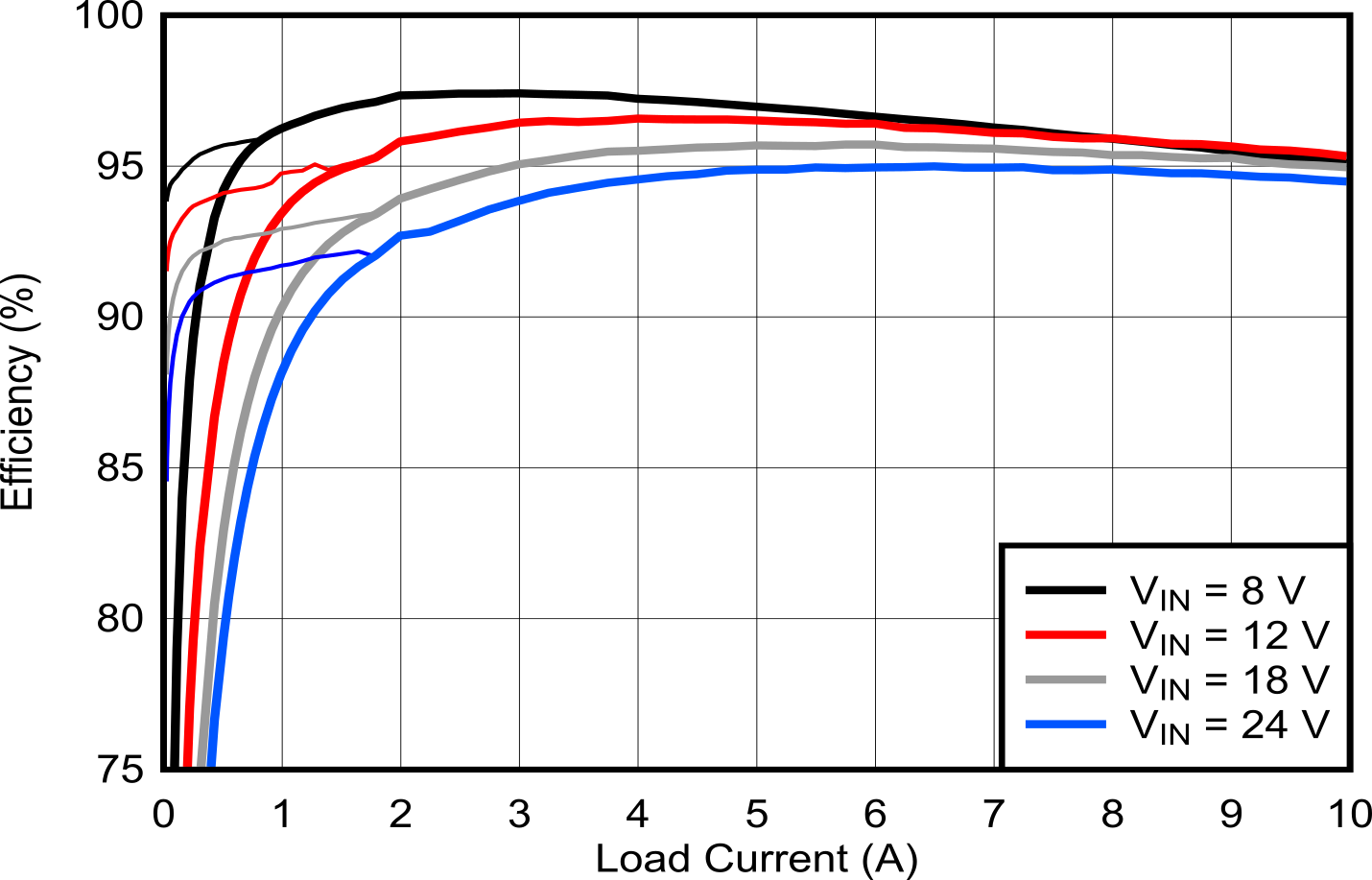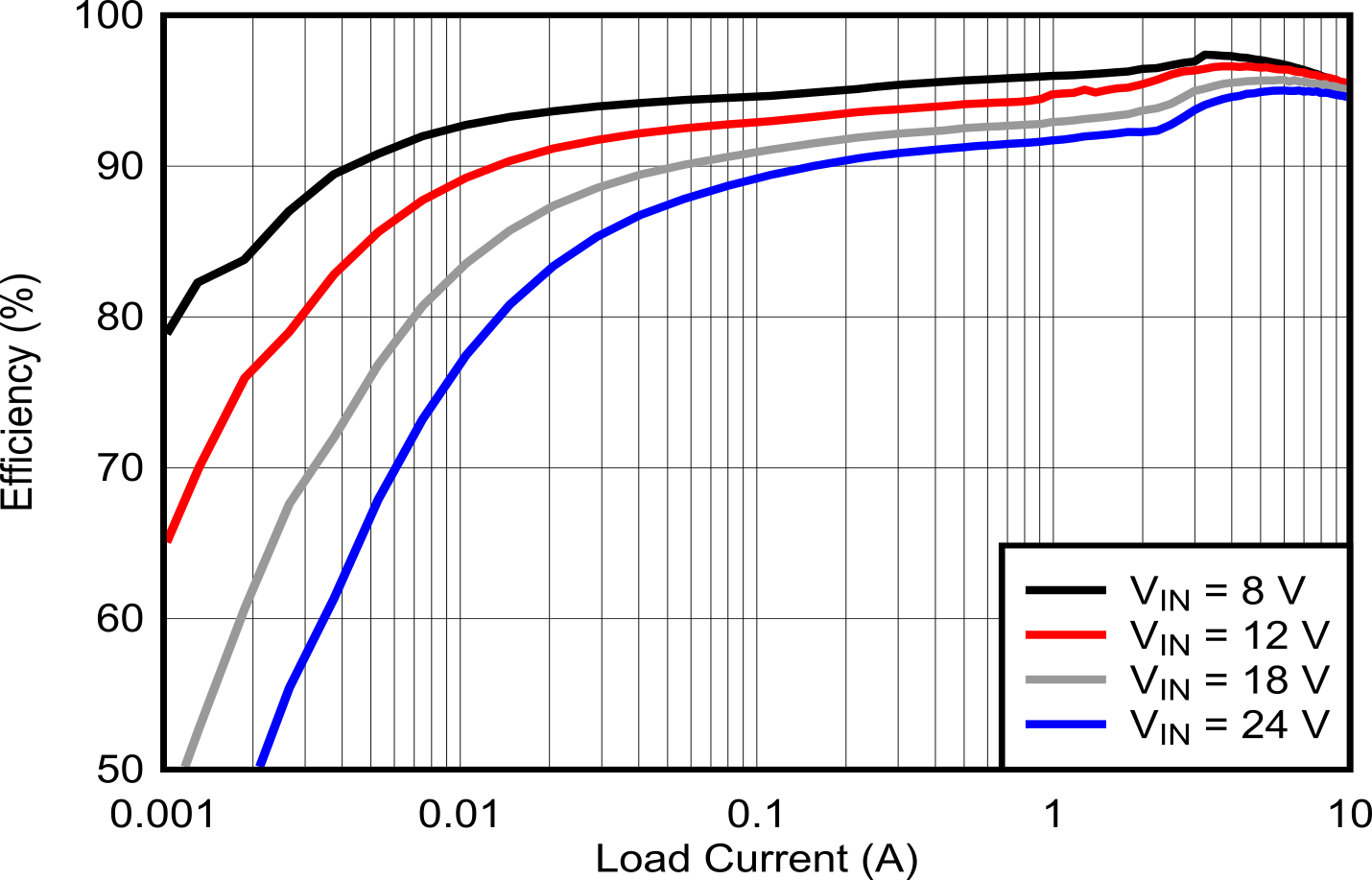ZHCSNB5B June 2021 – February 2025 LM25148-Q1
PRODUCTION DATA
- 1
- 1 特性
- 2 应用
- 3 说明
- 4 说明(续)
- 5 可订购器件型号
- 6 引脚配置和功能
- 7 规格
-
8 详细说明
- 8.1 概述
- 8.2 功能方框图
- 8.3
特性说明
- 8.3.1 输入电压范围 (VIN)
- 8.3.2 高压偏置电源稳压器(VCC、VCCX、VDDA)
- 8.3.3 精密使能端 (EN)
- 8.3.4 电源正常监视器 (PG)
- 8.3.5 开关频率 (RT)
- 8.3.6 双随机展频 (DRSS)
- 8.3.7 软启动
- 8.3.8 输出电压设定值 (FB)
- 8.3.9 最短可控导通时间
- 8.3.10 误差放大器和 PWM 比较器(FB、EXTCOMP)
- 8.3.11 斜率补偿
- 8.3.12 电感器电流检测(ISNS+、VOUT)
- 8.3.13 断续模式电流限制
- 8.3.14 高侧和低侧栅极驱动器(HO、LO)
- 8.3.15 输出配置 (CNFG)
- 8.3.16 单输出双相运行
- 8.4 器件功能模式
- 9 应用和实施
- 10器件和文档支持
- 11修订历史记录
- 12机械、封装和可订购信息
9.2.2.3 应用曲线

| 5V 输出 | |||

| 10A 电阻负载 |

| VIN 从 12V 斜升至 40V | 5A 负载 |

| VIN 步进至 12V | 10A 电阻负载 |

| VIN = 12V | FPWM |

| 5V 输出 |

| 无负载 |

| VIN 降至 4V | 1A 负载 |

| VIN = 12V | 10A 电阻负载 |

| VIN = 12V | FPWM |